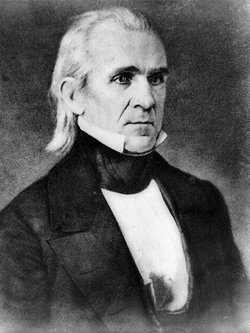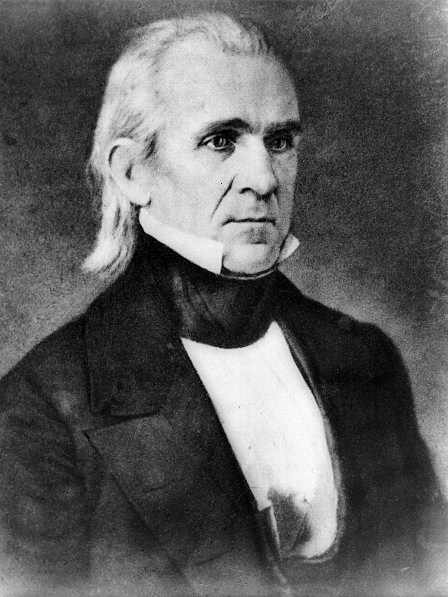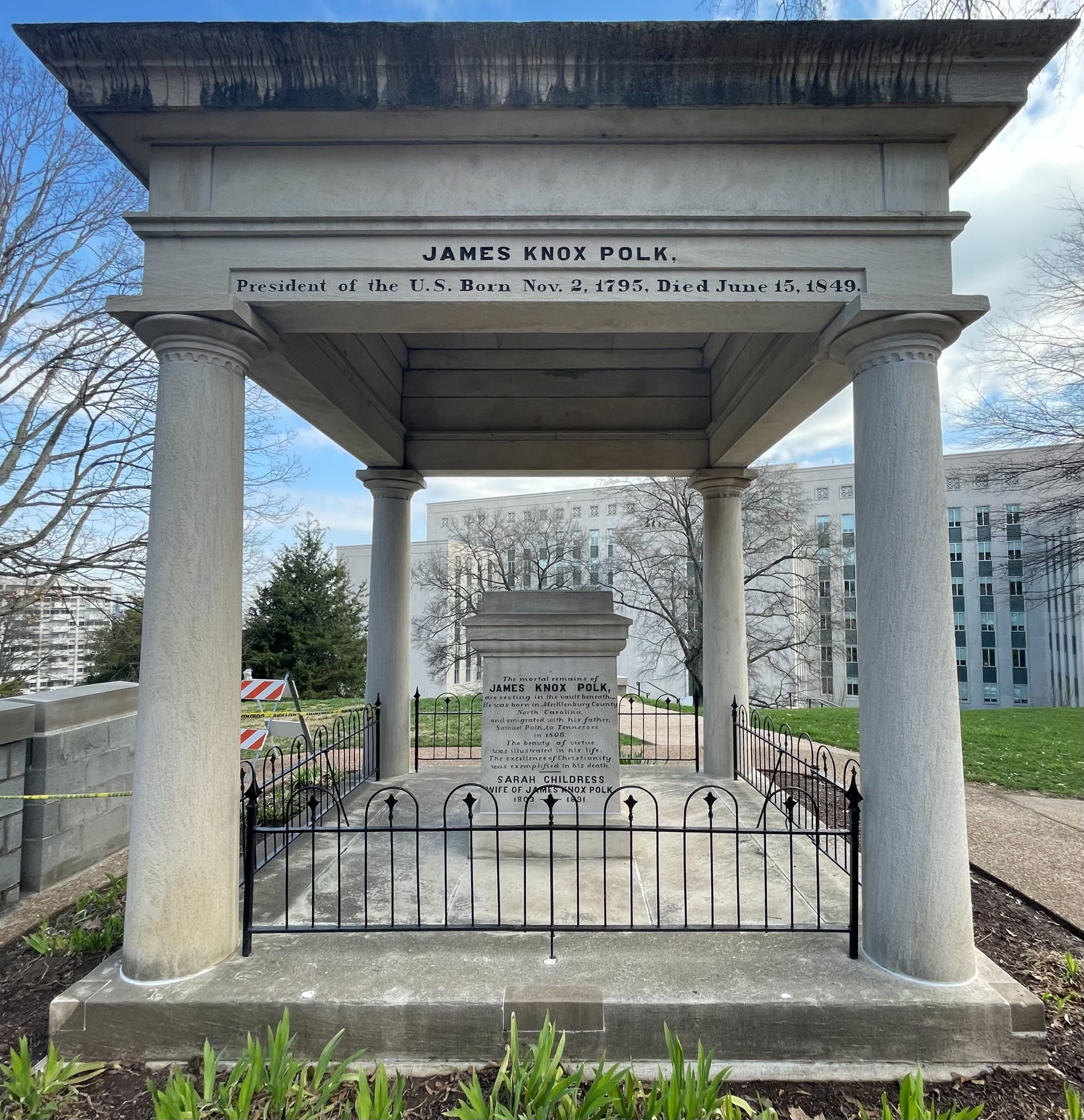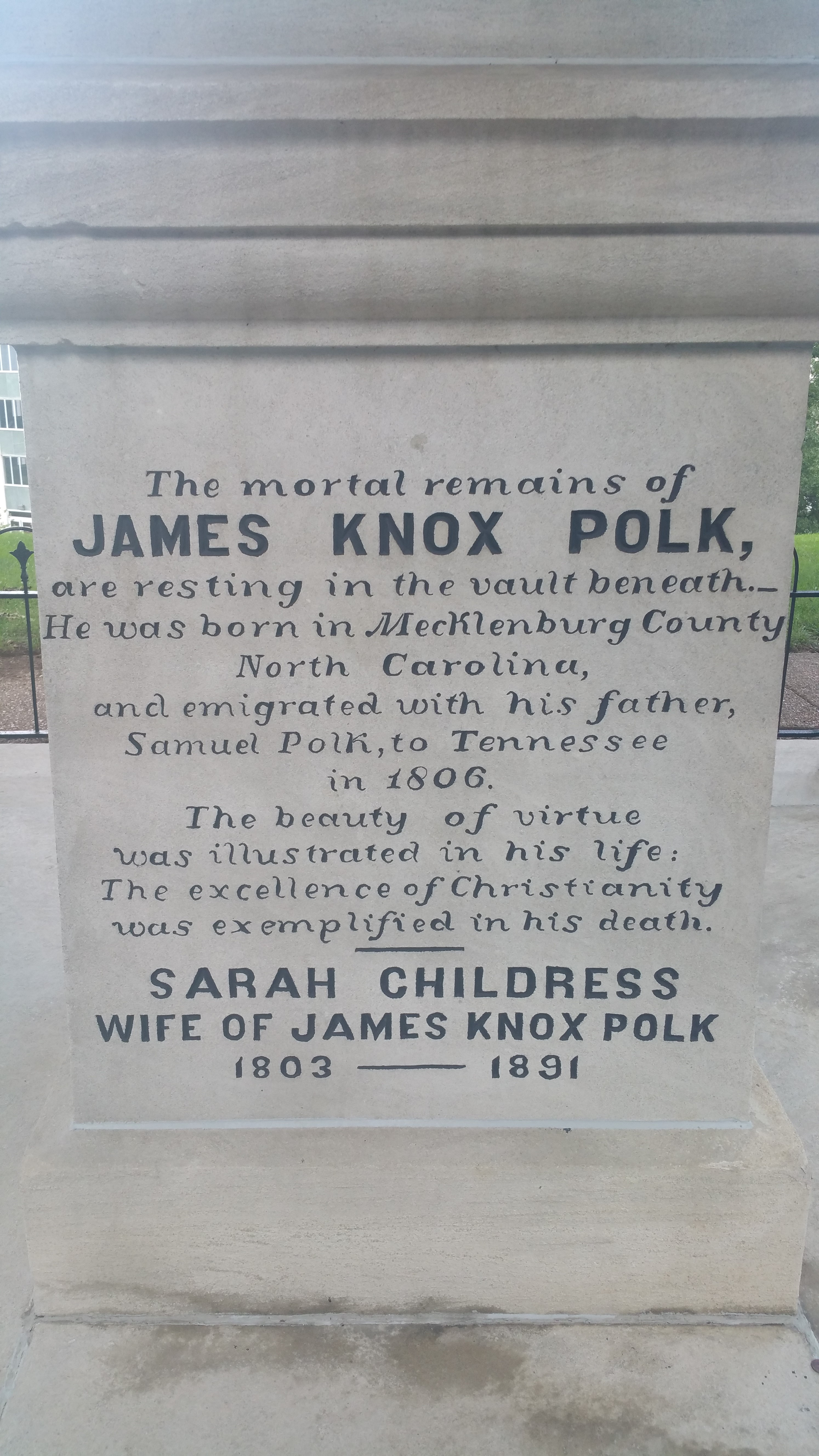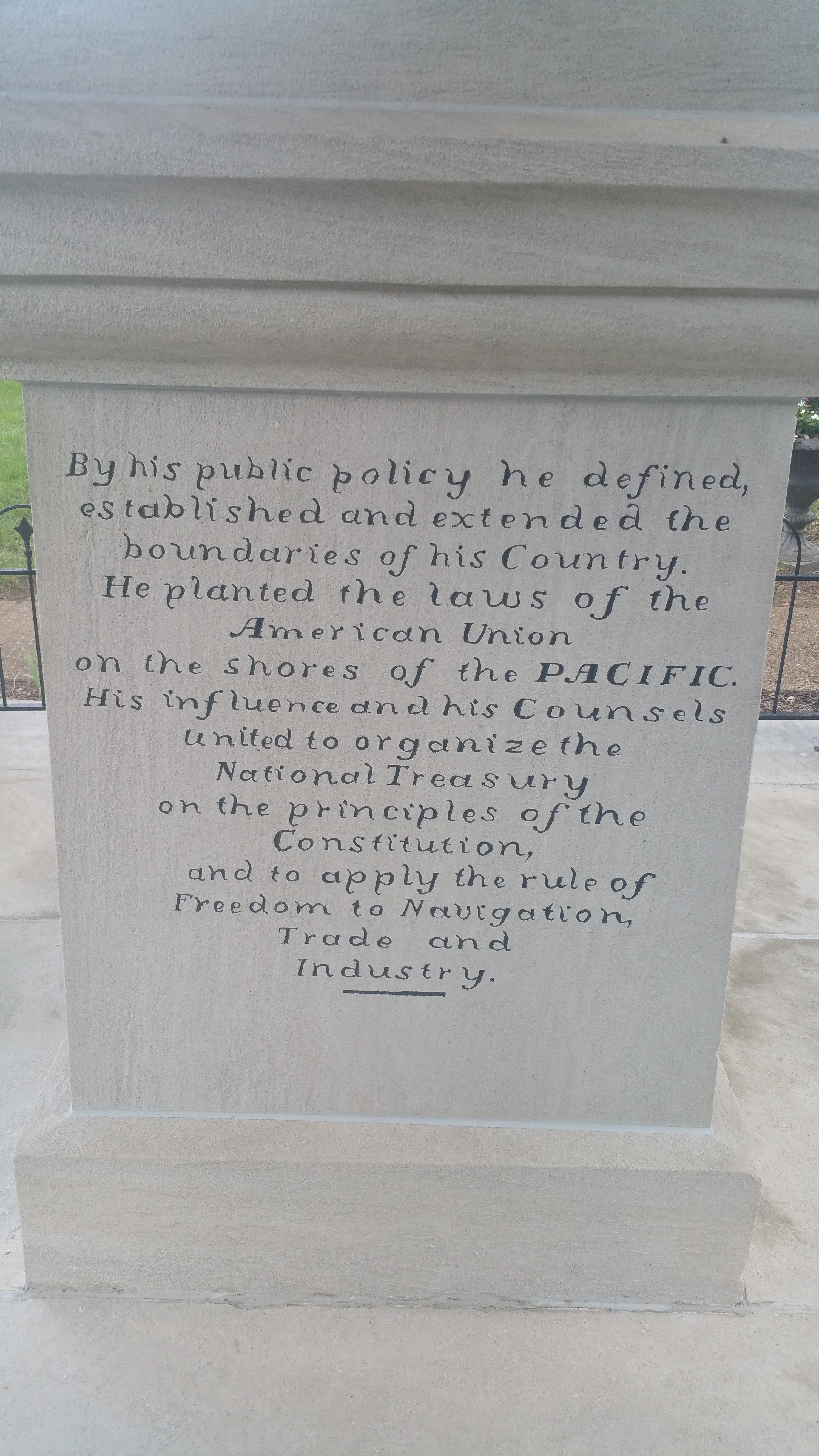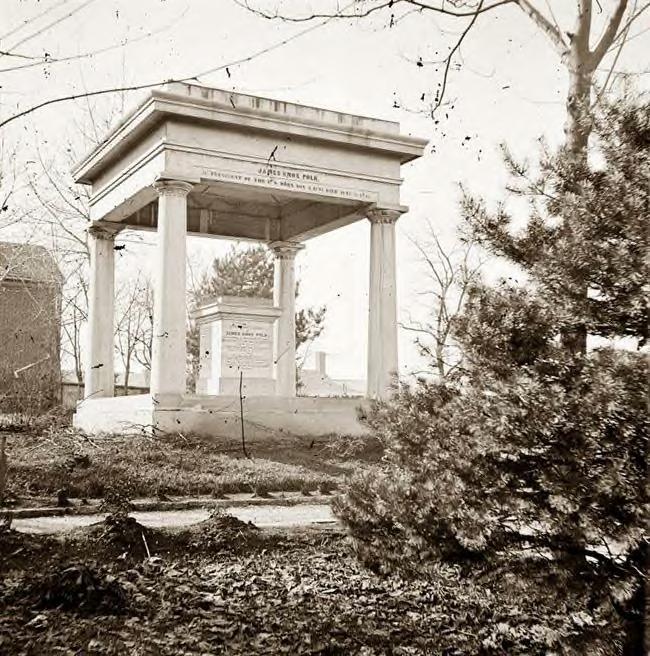11th United States President, Tennessee Governor, U.S. Congressman. He was born on a 250-acre farm in Pineville, North Carolina, moving to Columbia, Tennessee at age eleven. After a mere two years of formal education, he returned to North Carolina to become an honor student at the University of North Carolina at Chapel Hill. Upon graduation, he studied law in Nashville under Felix Grundy and then established a law practice in Columbia. During his first year in the Tennessee Legislature, he was introduced to Sarah Childress by Andrew Jackson. A courtship ensued culminating in marriage on January 1, 1824. His Congressional career lasted fourteen years including two terms as the 13th Speaker of the House. Polk returned home and successfully ran as a candidate for Governor of Tennessee, becoming the state's 9th Governor. After a two-year term, he failed to be reelected in 1841 and 1843. Shrewdly, he did not quit politics. His opportunity to revive his career came at the Democratic convention where he became a compromise presidential candidate and went on to win the White House. The couple arrived in Washington for the presidential inauguration by boat and his wife set the stage for an austere administration. There was to be no dancing, singing, or alcohol permitted in the Polk White House and the Sabbath would be strictly observed. However, his administration was froth with achievement. He expanded the borders of the United States to the Pacific Ocean while adding three states to the Union, started the U.S. Naval Academy, began construction of the Washington Monument and issued the first postage stamp while proclaiming a uniform standard for all the states; elections would be held on the first Tuesday after the first Monday in November. True to his campaign pledge, he served only a four-year term. Before he and his wife returned to Tennessee, the couple embarked on an extensive tour of the southern states. At the end of the trip, he moved into his recently purchased estate in Nashville, "Polk Place." Besides those at the Nashville mansion, he owned a cotton plantation near Yalobusha, Mississippi with slaves and according to documents, took three slaves to the White House. Three months after leaving the White House, James Polk died during a cholera epidemic at age 53. He was buried at the Nashville City Cemetery and later reinterred on the lawn of his home Polk Place under a monument designed by architect William Strickland. His widow lived for over forty-two years at Polk Place before her death at age 87 and was buried beside him. The couple was childless. Eventually, Polk Place became neglected, was sold, and then demolished by 1901. After the property was sold, the couple's remains were re-interred on the grounds of the Tennessee State Capitol in 1893. His birthplace in Pineville is not authentic but a reconstruction on land from the farm of his birth resulted in a few embellished period cabins and a stone historic monument. The ancestral home in Columbia, Tennessee was constructed by the President's father in 1816 and is the only surviving residence of where Polk lived. Here he practiced law and began his political career. The home displays original items from his years in Tennessee and Washington including furniture, paintings and White House china. In the courtyard is located the cast iron fountain from the demolished Polk Place mansion in downtown Nashville. The home in Columbia is considered the President James Polk Home and Museum. It was designated a National Historic Landmark in 1961, and is listed on the National Register of Historic Places. Until the 21st century, he was ranked at least tenth in various polls as the most successful United States President.
11th United States President, Tennessee Governor, U.S. Congressman. He was born on a 250-acre farm in Pineville, North Carolina, moving to Columbia, Tennessee at age eleven. After a mere two years of formal education, he returned to North Carolina to become an honor student at the University of North Carolina at Chapel Hill. Upon graduation, he studied law in Nashville under Felix Grundy and then established a law practice in Columbia. During his first year in the Tennessee Legislature, he was introduced to Sarah Childress by Andrew Jackson. A courtship ensued culminating in marriage on January 1, 1824. His Congressional career lasted fourteen years including two terms as the 13th Speaker of the House. Polk returned home and successfully ran as a candidate for Governor of Tennessee, becoming the state's 9th Governor. After a two-year term, he failed to be reelected in 1841 and 1843. Shrewdly, he did not quit politics. His opportunity to revive his career came at the Democratic convention where he became a compromise presidential candidate and went on to win the White House. The couple arrived in Washington for the presidential inauguration by boat and his wife set the stage for an austere administration. There was to be no dancing, singing, or alcohol permitted in the Polk White House and the Sabbath would be strictly observed. However, his administration was froth with achievement. He expanded the borders of the United States to the Pacific Ocean while adding three states to the Union, started the U.S. Naval Academy, began construction of the Washington Monument and issued the first postage stamp while proclaiming a uniform standard for all the states; elections would be held on the first Tuesday after the first Monday in November. True to his campaign pledge, he served only a four-year term. Before he and his wife returned to Tennessee, the couple embarked on an extensive tour of the southern states. At the end of the trip, he moved into his recently purchased estate in Nashville, "Polk Place." Besides those at the Nashville mansion, he owned a cotton plantation near Yalobusha, Mississippi with slaves and according to documents, took three slaves to the White House. Three months after leaving the White House, James Polk died during a cholera epidemic at age 53. He was buried at the Nashville City Cemetery and later reinterred on the lawn of his home Polk Place under a monument designed by architect William Strickland. His widow lived for over forty-two years at Polk Place before her death at age 87 and was buried beside him. The couple was childless. Eventually, Polk Place became neglected, was sold, and then demolished by 1901. After the property was sold, the couple's remains were re-interred on the grounds of the Tennessee State Capitol in 1893. His birthplace in Pineville is not authentic but a reconstruction on land from the farm of his birth resulted in a few embellished period cabins and a stone historic monument. The ancestral home in Columbia, Tennessee was constructed by the President's father in 1816 and is the only surviving residence of where Polk lived. Here he practiced law and began his political career. The home displays original items from his years in Tennessee and Washington including furniture, paintings and White House china. In the courtyard is located the cast iron fountain from the demolished Polk Place mansion in downtown Nashville. The home in Columbia is considered the President James Polk Home and Museum. It was designated a National Historic Landmark in 1961, and is listed on the National Register of Historic Places. Until the 21st century, he was ranked at least tenth in various polls as the most successful United States President.
Bio by: Donald Greyfield
Inscription
JAMES KNOX POLK
President of the U.S. Born Nov. 2, 1795, Died June 15, 1849.
The mortal remains of
JAMES KNOX POLK,
are resting in the vault beneath._
He was born in Mecklenburg County
North Carolina,
and emigrated with his father,
Samuel Polk, to Tennessee
in 1806.
The beauty of virtue
was illustrated in his life:
The excellence of Christianity
was exemplified in his death.
SARAH CHILDRESS
WIFE OF JAMES KNOX POLK
1803-1891
By his public policy he defined,
established and extended the
boundaries of his Country.
He planted the laws of the
American Union
on the shores of the Pacific.
His influence and his Counsels
united to organize the
National Treasury on the principles of the
Constitution,
and to apply the rule of
Freedom to Navigation,
Trade and Industry.
His life was devoted to
the public service. He was elected
successively to the first
places in the State and Federal
Governments. A member of the
General Assembly,
a member of Congress and
Chairman of the most important
Congressional Committees:
Speaker of the House of
Representatives,
Governor of Tennessee and
President of the
United States.
Family Members
-
![]()
Jane Maria Polk Walker
1798–1876
-
Lydia Eliza POLK Caldwell/ Richmond
1800–1864
-
![]()
Franklin Ezekiel Polk
1802–1831
-
![]()
Marshall Tate Polk
1805–1831
-
![]()
John Lee Polk
1807–1831
-
![]()
Naomi Tate Polk Harris
1809–1836
-
![]()
Mrs Ophelia Clarissa Polk Hayes
1812–1851
-
![]()
William Hawkins Polk
1815–1862
-
![]()
Samuel Washington Polk
1817–1839
Advertisement
See more Polk memorials in:
Records on Ancestry
Sponsored by Ancestry
Advertisement
